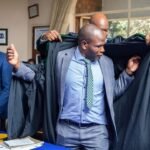Veeslee Mhepo
While almost half of the country’s population in Zimbabwe is believed to be still offline and the cost of getting on the internet is going up widening the digital gap, digital inclusion has been cited as one of the key drivers to improve adolescent’s health and well-being.
This was revealed during a workshop organized by My Age Zimbabwe, a non-governmental organization that advocates for young people’s health related issues, themed ‘What Young People Want Campaign’ held on November 03.
The engagement meeting was attended by opinion leaders, influencers, the Ministry of Health and Child Care (MoHCC), Zimbabwe National Family Planning Council (ZNFPC), Legal Resources Foundation, SayWhat Trust, religious leaders among other stakeholders in Masvingo.
Ministry of Primary and Secondary Education (MoPSE) representative Lovemore Mudumi said digital inclusion has power to improve health and wellbeing of adolescents and helps young people to make informed decisions.
“There is huge potential for digital inclusion to improve health and well-being, even as we are looking at the digital world, we need to make sure we bridge the digital divide and include all the young people especially those in marginalized communities and collaborate with different organizations.
He said digital inclusion should include everyone from diverse communities and collaborate with different organizations.
“We need to create a platform where young people who have the hunger for information CSOs and government entities can use these platforms to disseminate information to the next person,” said Mudumi.
Development Agenda for Girls and Women in Africa Network (DAWA) representative Sphiwe Bhiza said the inclusion of young people in digital spaces was a major factor to consider when it comes to sustainability and improving adolescents’ health and wellbeing.
“Digital inclusion helps children to become independent and learn quickly to make informed decisions. Digital inclusion creates safe spaces to facilitate more inclusive decision-making and co-creation of policies and programs between young people and gatekeepers and that is how we will become sustainable.
“We need to create spaces for connection and peer-to-peer learning, reach advocates with diverse experiences and identities, and support the ability of youths to influence at different levels of decision- and policy making,” said Bhiza.
Speaking at the same event, Redemption Chivorese from Students and Youth Working on Reproductive Health Action Team (SAYWHAT) said the organization was working towards digital inclusion and use of digital technology to better the wellbeing of young people through providing access to internet to marginalized areas.
“As an organization we continue to work towards improving the health of Adolescents and young people in this digital era through providing gadgets, internet access and data, we sometimes provide data to young people and we’re partnering with other entities to create Hotspots for the digitally marginalized areas,” said Chivorese
He said in order to improve the health and wellbeing of young people there was need to address issues of policy framework on Sexual Reproductive Health Rights (SRHR).
“When we talk about achieving universal health for Adolescents and access to services, we must look at legal framework and SRHR policies, policies are not in line with each other for instance the majority act and the age of consent act. They need to be coherent so that young people can universally have access,” said Chivorese.
Wadzanai Dzimwasha from My Age Zimbabwe said in order to achieve Universal Adolescent Health in a diverse environment, movement building and capacitation is the way to go.
“Movement building is a key and it works; why work alone when we’re working on the same thing? If people were to work together and young people are capacitated, we will achieve Universal Adolescent health, capacitating young people in their diversity and grow peer networks, this will definitely improve the health and wellbeing of Adolescents,” said Dzimwasha
The workshop was aimed at advocating for improved policies, programs and increased financial and political commitments for advancing the health and well-being of young people in Zimbabwe.
The Campaign focused on partnerships by building bridges between diverse actors and bringing advocates’ perspectives into the adolescent health and wellbeing conversation, bringing an opportunity to connect people and ideas to drive solutions for the health, rights and wellbeing of adolescents and young people.
The major focus areas of the campaign were enhancing Adolescents well-being in multi stakeholder platforms, zooming into policy and programs and facilitating digital inclusion and use of digital technology, various points of action and commitments were raised.
Among some of the digital approaches that are being used to improve health and wellbeing of adolescents and young people in Zimbabwe cited were Smart Learners Hub by Say What, Mobile Hub Application by DAWA and the development of Ruzivo Zimbabwe National Learning Passport by the Ministry of Primary and Secondary Education among others.







